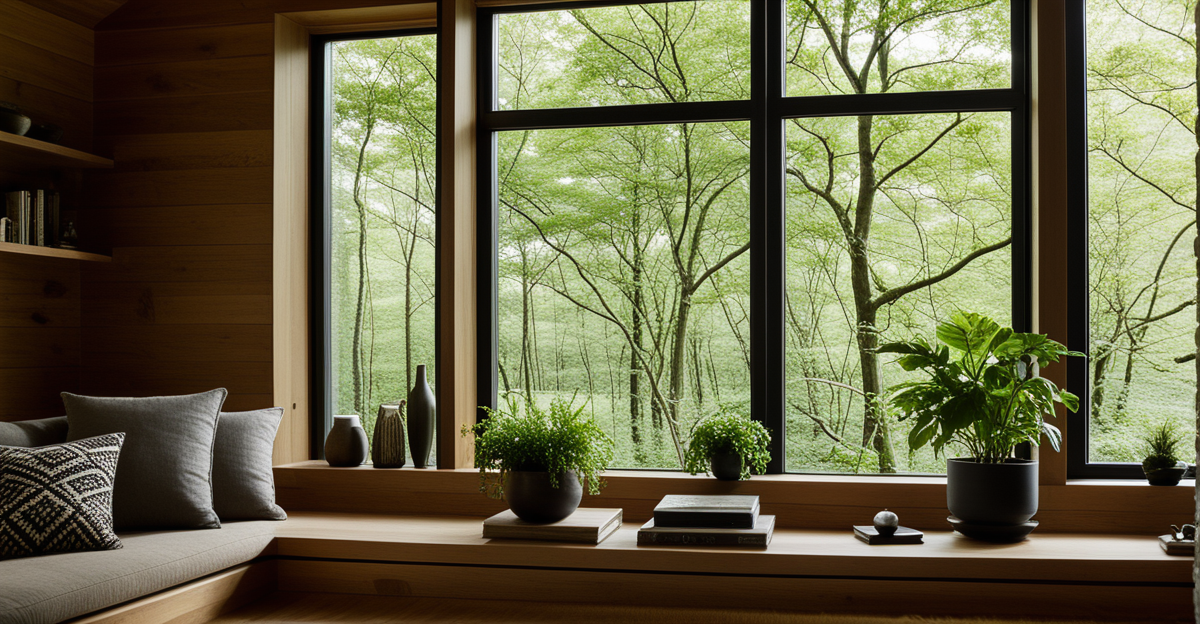Immediate ways sustainable practices transform home decor
Sustainable home decor actively reshapes style and material choices by prioritizing eco-friendly changes that reduce environmental impact without sacrificing aesthetics. Embracing sustainable living practices means opting for materials like reclaimed wood, organic fabrics, and low-waste production methods, which bring a unique, authentic texture to interiors. These choices lend spaces a timeless, natural charm while supporting environmental health.
The visible benefits of eco-friendly decor changes are not just ethical but immediately noticeable. Rooms feel fresher and more inviting due to the use of non-toxic paints and natural fibres. These materials often have calming colors and textures derived from nature, creating warmth and comfort. Moreover, such sustainable home decor reduces exposure to harmful chemicals, promoting better indoor air quality.
This might interest you : Creative Ideas to Maximize Your UK Home’s Interior Space
Quick swaps can transform your living space sustainably with minimal effort. Replace synthetic cushions with organic cotton or linen covers. Choose furniture crafted from sustainably harvested wood or repurpose vintage pieces to reduce waste. Even simple steps like opting for energy-efficient lighting or biodegradable accessories make a difference and support sustainable living practices effectively within your decor scheme.
Actionable tips for eco-friendly interior upgrades
Discovering practical tips for sustainable decor ideas can significantly elevate your home’s eco-friendliness while maintaining style. One key step is selecting sustainable materials and paints. Opt for low-VOC or non-toxic paints to improve indoor air quality and reduce environmental harm. Natural paints made from clay or plant-based ingredients provide both durability and a softer ecological footprint.
Have you seen this : How Can Smart Home Technology Revolutionize Your Everyday Living Experience in the UK?
Upcycling and repurposing existing furniture is another powerful sustainable living practice. Instead of discarding older pieces, refurbish or repaint them to extend their life. This reduces waste and saves resources compared to buying new items. For example, turning an old wooden chair into a vibrant accent piece brings character and sustainability into your decor.
Energy-efficient lighting and appliances complement sustainable home decor by lowering electricity consumption and greenhouse gas emissions. LED bulbs use significantly less energy and last longer than traditional bulbs. Incorporating smart lighting controls, such as timers and dimmers, further optimizes energy use without compromising ambiance.
By employing these practical tips, you actively contribute to an eco-friendly home environment. Each small adjustment enhances sustainable living practices, promoting both environmental responsibility and inviting interiors.
Sustainable materials that enhance both style and impact
Sustainable materials form the backbone of lasting eco-friendly home decor. Choosing renewable resources like bamboo, reclaimed wood, and recycled metal not only reduces environmental harm but also adds distinctive character to interiors. Bamboo, for example, is fast-growing and durable, making it an excellent sustainable material for flooring, furniture, and decorative accents. Its natural tones bring warmth and a modern touch to any room.
Reclaimed wood carries history and uniqueness, providing textured surfaces unavailable in mass-produced options. This type of wood is harvested from old buildings or discarded furniture, preventing waste and conserving forests. Similarly, recycled metal offers strength and industrial appeal while minimizing the need for new mining operations.
For textiles, natural fibres such as organic cotton, hemp, and linen support sustainable living practices by being biodegradable and often requiring fewer chemicals during production. Using these fibres in upholstery and curtains complements the eco-friendly products used throughout a home.
Choosing low-VOC and non-toxic finishes enhances safety by reducing harmful emissions indoors. These finishes maintain durability and aesthetic appeal without compromising air quality, reinforcing the commitment to sustainable home decor. Ultimately, integrating sustainable materials delivers both style and impactful environmental benefits.
DIY projects for sustainable decor transformation
Engaging in DIY sustainable decor projects offers a rewarding path to personalize your home while embracing eco-friendly crafts. Creating decor from salvaged or local materials reduces waste and supports sustainable living practices by minimizing reliance on mass-produced items. For instance, repurposing old pallets into rustic shelves or using reclaimed fabric for cushion covers blends creativity with environmental mindfulness.
Refurbishing old furniture pieces breathes new life into the home without contributing to landfill waste. Simple tasks like sanding and repainting can transform worn items into stylish focal points. This approach aligns with sustainable living practices by conserving resources and reducing demand for new manufacturing.
Incorporating plants and biophilic design elements is another hands-on eco project that enhances air quality and wellbeing. Houseplants introduce natural textures and colors, connecting interiors to nature while supporting sustainable home decor principles. These hands-on eco projects create inviting, healthier environments quickly and effectively.
By combining these DIY strategies—salvaging materials, refurbishing furniture, and embracing greenery—you actively contribute to a sustainable home. These approaches not only enrich your decor but also foster a deeper connection to eco-conscious living.
Leading eco-conscious brands and resources
When selecting sustainable decor brands, it is crucial to consider those committed to both design excellence and environmental responsibility. Brands that integrate sustainability in their sourcing, production, and packaging often offer products made from renewable materials, reducing ecological footprints while maintaining style. Choosing from such brands ensures your home benefits from truly ethical home goods rooted in sustainable living practices.
To identify authentic eco-friendly options, look for certifications and labels like Fair Trade, FSC (Forest Stewardship Council), and GOTS (Global Organic Textile Standard). These provide verified assurance that products meet stringent environmental and social criteria. For example, FSC-certified wood guarantees legal and sustainable harvesting, enhancing your confidence in the product’s impact.
Finding eco-friendly suppliers involves researching retailers who prioritize transparency and source ethically produced items. Many sustainable decor brands offer databases or guides to help consumers discover ethical products for every room—be it living room furniture, bedroom textiles, or kitchen accessories. Taking advantage of these resources simplifies the process of upgrading your home with responsible choices.
By supporting leading eco-conscious brands and using industry certifications, you ensure your sustainable home decor reflects genuine commitment to sustainability, combining aesthetics with a positive environmental impact.
Before-and-after transformations using sustainable living practices
Experience the tangible impact of a sustainable home makeover through inspiring transformation examples. One common scenario involves replacing conventional materials with eco-friendly products such as reclaimed wood flooring or organic fabrics, instantly elevating both style and environmental footprint. These smart swaps often refresh a room’s appearance while aligning with sustainable living practices.
How do these changes improve a space visually and functionally? Eco-friendly renovations frequently enhance indoor air quality, reduce energy use, and introduce timeless textures that conventional materials lack. For example, installing low-VOC paints and energy-efficient lighting not only brightens rooms but also supports healthier living environments, a core goal of sustainable home decor.
Practical results are visible in various rooms: kitchens might adopt recycled metal fixtures and sustainably sourced cabinetry, while living areas benefit from upcycled furniture pieces that add character without waste. Even simple accessory swaps, like biodegradable planters or organic cushion covers, contribute to a cohesive and responsible design statement.
These before-and-after transformations demonstrate that embracing sustainable living practices is not just an ethical choice but a creative opportunity. They serve as engaging examples encouraging readers to pursue their own eco-conscious renovation projects confidently and stylishly.






